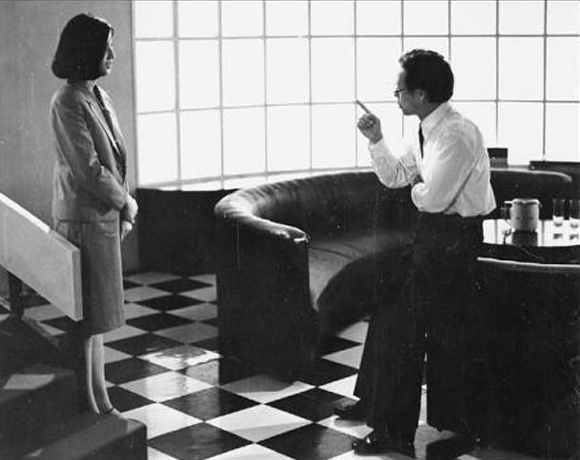dislocation

The Tamil-movie ↵Endhiran (Shankar 2010) is testimony of the cyberpunk discourse having reached Indian cinema. Nigeria’s Yoruba-language ‘Kajola’ (Akinmolayan 2010) shows the ↵same for Africa‘s largest movie industry.
‘Science-fiction film, like the science-fiction story, is an underdeveloped genre in China,’ writes Yingjin Zhang (1998: 297) in the ‘Encyclopedia of Chinese Film’ (Zhang & Xiao 1998). Nevertheless, already during the heyday of canonical [US-] cyberpunk there was a chinese cyberpunk movie—‘Dislocation’ directed by Huang Jianxin (1986).
As with Huang’s first film, Black Cannon Incident [1985], Dislocation uses the science-fiction genre to satirize the workings of bureaucracy. The protagonist, Zhao Shuxin, this time the director of a large department, suffers a series of nightmares. The absurd world that he dreams of signifies China in its socialist heyday, while the everyday world he inhabits represents China’s near future. A corrupt social system everywhere undermines technological innovation. Zhao longs for peace of mind and seeks a high tech solution, which unfortunately backfires.
In a skyscraper-filled urban setting, an isolated human figure surrounded by microphones and almost buried by files struggles with a socialist bureaucratic phenomenon: endless and meaningless talks and meetings. The use of red filters and shrill noises on the soundtrack reinforce the sense of unbearable conditions. The character wakes up from this operating room nightmare in which medical staff in black uniforms are attempting to kill him.
Contemplating himself in the mirror inspires Zhao to design a robot. Made in his image, the robot could stand in for him at every boring meeting. The robot should be a mechanical object subject to human instruction by its master. Yet Robot Zhao likes to attend meetings and give talks. It even learns how to smoke and drink. A visual montage of wine cups, cameras, and futuristic buildings, accompanied by the sound of applause, portrays the world the robot comes to enjoy.
Conflicts between human and machine emerge. During a conversation, robot Zhao expresses its concern that humans issue so many rules they then expect others to obey. Director Zhao warns the machine: ‘You think too much. That’s dangerous’.
The conflicts escalate as the robot becomes addicted to the systemic corruptions of modern living. Away from its master, it dates Zhao’s girlfriend, seducing her by offering her Zhao’s house key. He humiliates people with threats of violence. When Zhao expresses his desire to assign the robot a job doing work that is too dangerous for humans, the robot rebels by exposing itself in front of its designer. At last, in a final power struggle, Zhao destroys the robot. As Zhao looks again into the mirror, his nightmares begin anew. (Cui 1998: 143)

